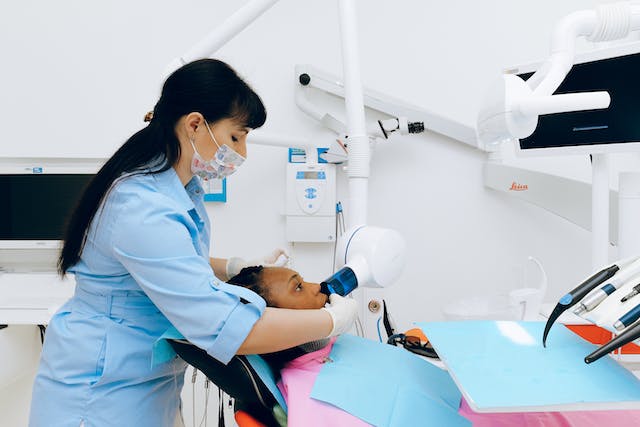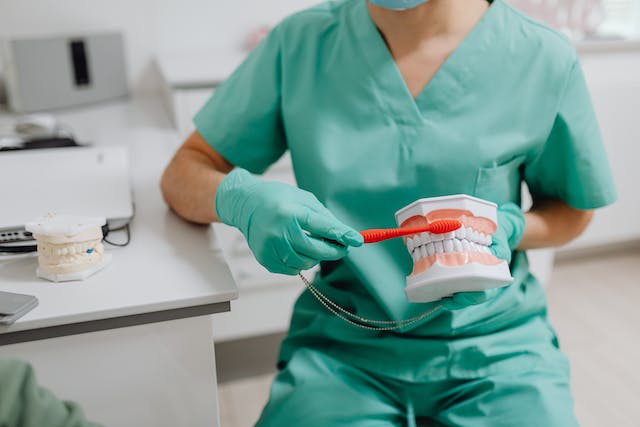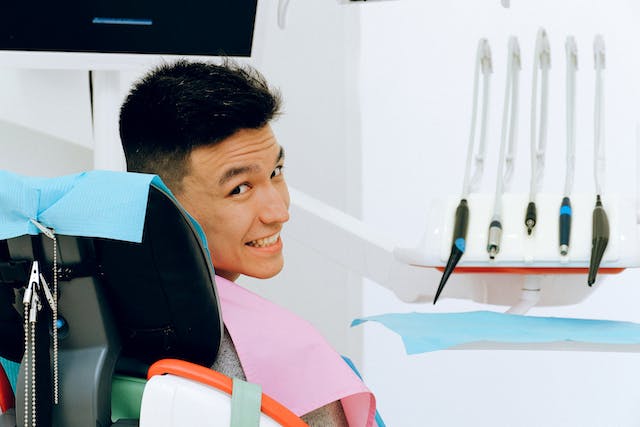Dentist Drill: Navigating the Evolution of Precision Dentistry

Dentistry, a field that continuously evolves, relies on cutting-edge tools to provide optimal care. One such indispensable tool is the dentist drill, a device that has undergone significant transformations over the years. From its humble beginnings to the latest technological marvels, dental drills play a crucial role in various dental procedures. Introduction In the realm of dentistry, precision is paramount, and the dentist drill stands as a testament to this commitment. As a vital tool in dental procedures, it facilitates the intricate work required for tasks like cavity preparation, root canals, and extractions. Evolution of Dentist Drills Historical Background To appreciate the significance of dental drills, a glimpse into their history is essential. Early drills were manual, requiring considerable skill and time. The advent of electric-powered drills marked a turning point, revolutionizing dental practices globally. Technological Advancements Over the Years As technology advanced, so did dental drills. From basic electric drills to the incorporation of air abrasion and laser technologies, dentists today benefit from precision and efficiency like never before. Components of a Dental Drill Understanding the components of a dental drill is crucial for both dentists and patients. The drill’s handpiece, motor, and various attachments collectively contribute to its effectiveness in dental procedures. Types of Dental Drills Dental drills come in various types, each serving specific purposes. High-speed drills are ideal for precision work, while low-speed drills are suitable for more controlled procedures. Air abrasion drills offer a gentler alternative for certain treatments. Dental Drill Bits and Attachments The bits and attachments used in dental drills vary based on the procedure at hand. From diamond-coated bits for cutting to special attachments for polishing, each plays a vital role in ensuring successful outcomes. Dentist Drill Techniques Dental drill techniques involve more than just drilling. Dentists employ a range of precise movements to achieve optimal results while prioritizing patient comfort and safety. Advancements in Drill Technology In the ever-evolving landscape of dentistry, technological advancements continue to shape the use of dental drills. Laser technology and computer-aided systems enhance precision, making dental procedures more efficient and less invasive. Common Dental Procedures Using Drills The dentist drill is a versatile tool employed in various dental procedures, including cavity preparation, root canal treatments, and tooth extractions. Its adaptability makes it indispensable in modern dentistry. Patient Experience and Comfort Dental anxiety is a common concern, and dentists recognize the importance of patient comfort. Techniques such as sedation and advanced pain management contribute to a more pleasant experience for patients undergoing drilling procedures. Safety Measures in Dental Drilling Safety is paramount in dental practices. Dentists adhere to strict infection control measures and utilize protective gear to ensure the well-being of both themselves and their patients during drilling procedures. Challenges and Criticisms While dental drills are indispensable, they are not without challenges. Concerns such as noise, vibration, and their environmental impact have sparked discussions within the dental community regarding potential improvements. Future Trends in Dental Drilling Looking ahead, the future of dental drilling holds exciting possibilities. Anticipated advancements include the integration of artificial intelligence, promising even greater precision and efficiency in dental procedures. Choosing the Right Dental Drill for a Practice Selecting the right dental drill for a practice involves considering various factors, including the type of procedures performed and customization options. Dentists have a range of choices to meet their specific needs. Famous Innovations in Dental Drilling Throughout history, innovative minds have contributed to the evolution of dental drills. Notable inventors and their groundbreaking contributions have left an indelible mark on modern dentistry. Conclusion In conclusion, the dentist drill stands as a cornerstone in the practice of dentistry. Its evolution from manual tools to sophisticated, high-tech devices underscores the commitment of the dental community to precision and patient well-being. As we navigate the future, the continued pursuit of innovative dental technologies ensures that dentists can provide optimal care to their patients. Frequently Asked Questions (FAQs) Are dental drills painful? Dental drills may cause some discomfort, but advancements in pain management techniques ensure that patients experience minimal pain during procedures. How do dentists minimize noise during drilling? Dentists use modern, noise-reducing technologies in their drills and may provide ear protection to minimize noise-related discomfort. Can dental drills be used on children? Yes, dental drills are commonly used on children, especially for procedures like cavity fillings. Dentists take extra care to ensure a comfortable experience for young patients. Are there alternatives to traditional dental drills? Air abrasion drills and laser technology are considered alternatives to traditional dental drills for certain procedures, offering gentler options. What role does infection control play during dental drilling? Strict infection control measures, including the sterilization of drill components, are implemented to prevent the spread of infections during dental procedures.
Broken Tooth: What To Do While Waiting for the Dentist

Introduction Picture this: You’re savoring a delightful meal when suddenly, a sharp pain pierces through your mouth. A broken tooth! Panic sets in, but fear not. We’re here to guide you through this dental emergency, offering a comprehensive approach to manage the situation while waiting for the dentist. Assessing the Damage Begin by assessing the severity of the broken tooth. Is it a minor chip or a more significant fracture? Understanding the extent of the damage will help you determine the necessary actions to take. Immediate First Aid Rinse your mouth gently with warm water to remove any debris. Manage pain by taking over-the-counter pain relievers, following the recommended dosage. Avoiding Certain Actions Steer clear of crunchy or hard foods, and avoid activities that may worsen the situation. Taking preventive measures is crucial to prevent further damage. Temporary DIY Solutions Consider using dental wax or over-the-counter temporary filling materials to cover the exposed area, providing a protective barrier until professional help is available. Keeping the Area Clean Maintain oral hygiene by gently brushing your teeth, avoiding the broken area. This helps prevent infection and ensures a cleaner environment for healing. Icing for Swelling Apply an ice pack to the affected area for 15-20 minutes at a time, with breaks in between. This helps reduce swelling and provides relief. Cloves and Clove Oil Explore the natural remedy of cloves or clove oil for pain relief. Apply directly to the affected area, ensuring proper dosage and application techniques. Over-the-Counter Numbing Gels When used cautiously, over-the-counter numbing gels can provide temporary relief. Be sure to follow the product’s instructions for safe application. Soft Diet Recommendations Opt for a soft diet to avoid putting additional stress on the damaged tooth. Choose easily chewable foods to maintain nutrition without causing harm. When to Seek Emergency Care Be vigilant for signs of complications, such as increased pain or swelling. If these occur, seek emergency dental care promptly to prevent further issues. Contacting Your Dentist Call your dentist to explain the situation. Follow their advice and prepare for the dental visit by providing necessary information. Transporting the Broken Piece If a piece of the tooth has broken off, handle it carefully. Store it in milk or your saliva to increase the chances of successful tooth restoration. Discussing Long-Term Solutions During your dental visit, discuss long-term solutions with your dentist. Explore different procedures for repairing the broken tooth, considering cost considerations and insurance coverage. The Emotional Impact of a Broken Tooth A broken tooth can have more than just physical consequences. The emotional toll of such a situation can be significant. Understand and address the anxiety and stress associated with dental emergencies. Consider coping mechanisms and seek emotional support from friends, family, or professionals if needed. Exploring Preventive Measures Prevention is always better than cure. Gain insights into tips for avoiding situations that may lead to broken teeth. Learn about the crucial role of regular dental check-ups in preventing dental emergencies, providing a proactive approach to oral health. Understanding Tooth Anatomy Delve into a brief overview of tooth structure to better comprehend how different types of fractures may affect the tooth. This knowledge can empower you to make informed decisions regarding immediate first aid and long-term solutions. The Role of Enamel in Tooth Protection Explore the vital role of enamel in preventing tooth damage. Discover ways to strengthen enamel for better tooth resilience, enhancing your overall dental health and reducing the risk of future emergencies. Exploring Natural Remedies for Dental Pain While cloves are a well-known natural remedy for dental pain, there are other options worth exploring. Delve into alternative remedies, understanding their cautionary use and effectiveness in providing relief during dental emergencies. Incorporating Mindfulness in Dental Emergency Situations Amidst the chaos of a dental emergency, incorporating mindfulness can make a significant difference. Explore breathing exercises and relaxation techniques to manage stress during these situations. Understand the profound connection between stress reduction and overall oral health. Maintaining Overall Oral Health Take a holistic approach to oral health by considering its impact on your overall well-being. Receive practical tips for a comprehensive oral care routine that goes beyond emergencies, fostering long-term dental health. The Future of Dental Emergency Response Get a glimpse into the future of emergency dental care. Explore technological advancements that may revolutionize how dental emergencies are handled, including the role of telemedicine in providing initial consultations. Cultural Perspectives on Dental Emergencies Dive into the fascinating world of varying cultural beliefs and practices related to dental care. Understand how cultural factors may influence individuals’ responses to a broken tooth, providing valuable insights into diverse approaches to oral health. The Importance of Pediatric Dental Emergencies Recognize the special considerations involved in handling broken teeth in children. Gain insights into how dental emergencies are managed in pediatric dentistry, ensuring the well-being of the younger population. Conclusion In times of a broken tooth, taking immediate action is crucial. By following these comprehensive steps, you can manage the situation effectively while awaiting professional dental care. Remember, your oral health matters, and timely intervention can make a significant difference. Frequently Asked Questions Is a broken tooth a dental emergency? Yes, a broken tooth is considered a dental emergency, and prompt action is essential to prevent complications. Can I use any over-the-counter pain reliever for tooth pain? It’s advisable to consult with a healthcare professional before taking any medication. They can recommend the most suitable option based on your health condition. How should I store a broken piece of my tooth? Store the broken piece in milk or your saliva to keep it moist, increasing the chances of successful tooth restoration. What foods should I avoid with a broken tooth? Avoid crunchy or hard foods that may worsen the damage. Stick to a soft diet to prevent additional stress on the tooth. How long can I wait before seeking dental care for a broken tooth? It’s best to seek dental care as soon as possible. Waiting too long may increase the risk
Future Trends in Mutual Dentists: What to Expect from?

Introduction to Mutual Dentists In the realm of healthcare, a revolutionary approach is reshaping the landscape of dental care – Mutual Dentist. Traditionally, dentistry has been a field characterized by isolated practices, but mutual dentistry introduces a collaborative and patient-centric model that promises a paradigm shift in oral health. The Importance of Dental Health Before delving into the innovative world of mutual dentistry, let’s revisit the importance of dental health. Beyond the aesthetics of a bright smile, oral health is intricately linked to overall well-being. Dental issues not only affect physical health but can also impact one’s self-esteem and social interactions. Challenges in Traditional Dentistry Traditional dentistry, while effective, often faces challenges in providing personalized and accessible care. Long waiting times, complex appointment scheduling, and the financial burden associated with dental treatments have been persistent issues. Understanding Mutual Dentists: A Paradigm Shift What are Mutual Dentists? Mutual dentists represent a collaborative network of dental professionals who work together to provide comprehensive and patient-focused care. This model transcends the boundaries of individual practices, fostering a supportive community of dentists sharing knowledge and resources. Benefits of Mutual Dentistry The benefits are manifold, ranging from enhanced patient experience to streamlined processes. Mutual dentistry breaks down silos, encouraging dentists to collaborate, share insights, and collectively contribute to elevating the standard of dental care. How Mutual Dentist Enhance Patient Experience Personalized Care One of the key advantages of mutual dentistry is the ability to offer personalized care. Dentists in this network collaborate on complex cases, ensuring that each patient receives tailored treatment plans based on their unique needs. Streamlined Appointment Scheduling Say goodbye to the days of tedious appointment scheduling. Mutual dentistry embraces modern technology, providing patients with user-friendly platforms for convenient and efficient booking, reducing waiting times and improving accessibility. Cost-Effective Dental Solutions Mutual dentistry addresses the financial aspect of dental care by pooling resources. This collaborative approach enables cost-sharing among dentists, resulting in more affordable treatments for patients. Addressing Perplexity in Dental Care Breaking Down Dental Jargon Dental terminology can be perplexing for the average person. Mutual dentists understand the importance of effective communication. They break down complex jargon, ensuring patients comprehend their diagnoses and treatment plans. Demystifying Dental Procedures In mutual dentistry, transparency is key. Patients are taken through each step of their treatment, demystifying dental procedures and alleviating anxieties associated with the unknown. The Burstiness Factor: Innovation in Mutual Dentistry Technological Advances Mutual dentists embrace cutting-edge technologies, from digital imaging to 3D printing of dental prosthetics. This commitment to innovation ensures that patients receive the highest standard of care, backed by the latest advancements in dental technology. Integration of AI in Dental Practices Artificial Intelligence is not just for futuristic scenarios. Mutual dentistry incorporates AI to streamline administrative tasks, improve diagnostic accuracy, and enhance treatment planning. This synergy between human expertise and AI revolutionizes dental practices. Maintaining Specificity in Dental Diagnosis and Treatment Tailored Treatment Plans No two smiles are the same, and neither should be the treatment plans. Mutual dentist prioritize specificity, tailoring treatments to individual patient needs. This approach ensures effective results and patient satisfaction. Precision Dentistry With advancements in diagnostic tools, mutual dentists achieve precision in diagnosis and treatment. The era of one-size-fits-all solutions is replaced by targeted interventions, minimizing discomfort and optimizing outcomes. Contextual Approach in Mutual Dentistry Understanding Patient History Mutual dentist beziers take a holistic approach by considering the patient’s history. Understanding lifestyle factors, previous dental experiences, and overall health enables dentists to provide contextually relevant care. Holistic Dental Care Beyond treating immediate issues, mutual dentistry promotes holistic dental care. Dentists collaborate with other healthcare professionals to address systemic factors affecting oral health, ensuring comprehensive and lasting results. Engaging Patient Narratives: Real Stories of Mutual Dentistry Success In the words of satisfied patients, mutual dentistry has transformed their dental experiences. Real-life stories attest to the effectiveness of this collaborative model, emphasizing the positive impact on oral health and overall well-being. Choosing the Right Mutual Dentist: A Guide for Patients Selecting a mutual dentist requires careful consideration. Factors such as expertise, patient reviews, and compatibility with the dentist’s approach are crucial. This guide assists patients in making informed decisions about their dental care providers. Common Myths and Misconceptions About Mutual Dentistry Dispelling Myths Mutual dentistry often faces misconceptions. Addressing common myths, such as loss of individuality in practice or compromised quality of care, helps in dispelling unfounded fears and building trust in this innovative approach. Facts vs. Fiction Separating facts from fiction, mutual dentistry stands strong in its commitment to providing top-notch care. Evidence-based information helps patients understand the reality behind the myths, fostering confidence in choosing mutual dentistry. Impact of Mutual Dentistry on Community Health Mutual dentistry extends its impact beyond individual patients. By promoting collaboration and community engagement, it contributes to improved oral health on a broader scale. Initiatives such as dental awareness programs and outreach activities enhance community well-being. Future Trends in Mutual Dentistry The journey of mutual dentistry is dynamic, with ongoing advancements. Exploring future trends, from further integration of technology to global collaborations, provides a glimpse into the evolving landscape of dental care. Conclusion: Transforming Dental Care Through Mutual Dentists In conclusion, mutual dentistry emerges as a transformative force in the world of dental care. Breaking down barriers, fostering collaboration, and prioritizing patient-centric approaches, this innovative model signifies a positive shift towards a healthier, happier oral care experience. FAQs About Mutual Dentists How is mutual dentistry different from traditional dentistry? Mutual dentistry emphasizes collaboration among dentists for comprehensive and personalized care, unlike traditional isolated practices. Are mutual dentists more expensive than regular dentists? Dentist mutualists often offer cost-effective solutions as they share resources, making quality dental care more accessible. Can I still choose my preferred dentist in a mutual dentistry network? Yes, mutual dentistry networks prioritize patient choice, allowing individuals to select a dentist that aligns with their preferences. Is mutual dentistry only for complex dental cases? No, mutual dentistry caters to a wide range of dental needs, from routine
